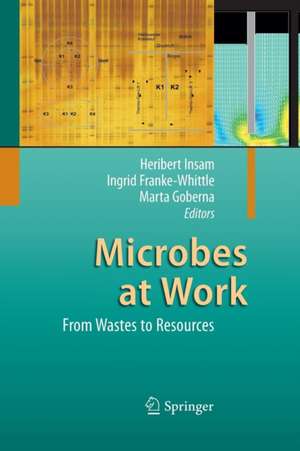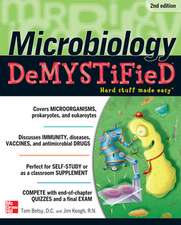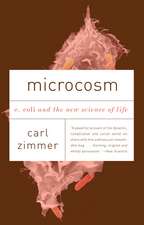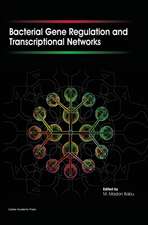Microbes at Work: From Wastes to Resources
Editat de Heribert Insam, Ingrid Franke-Whittle, Marta Gobernaen Limba Engleză Paperback – 27 noi 2014
The sixteen chapters of this book summarize the advantages and disadvantages of treatment processes, whether they are aerobic like composting or work without oxygen like anaerobic digestion for biogas (methane) production. These chapters show the potential of microorganisms to create valuable resources from otherwise wasted materials. These resources include profitable organic, humus-like soil conditioners or fertilizer components which are often suppressive to plant diseases. Composts may thus improve soil carbon sequestration, or support sustainable agriculture by reducing the need for mineral fertilizers or pesticides. If anaerobic digestion is used, the biogas produced may replace fossil fuels. Thus, proper biological waste treatment with the help of microorganisms should contribute to a reduction of anthropogenic greenhouse gas production.
| Toate formatele și edițiile | Preț | Express |
|---|---|---|
| Paperback (1) | 1218.83 lei 6-8 săpt. | |
| Springer Berlin, Heidelberg – 27 noi 2014 | 1218.83 lei 6-8 săpt. | |
| Hardback (1) | 1048.03 lei 38-45 zile | |
| Springer Berlin, Heidelberg – 16 dec 2009 | 1048.03 lei 38-45 zile |
Preț: 1218.83 lei
Preț vechi: 1486.38 lei
-18% Nou
Puncte Express: 1828
Preț estimativ în valută:
233.27€ • 242.59$ • 195.20£
233.27€ • 242.59$ • 195.20£
Carte tipărită la comandă
Livrare economică 14-28 martie
Preluare comenzi: 021 569.72.76
Specificații
ISBN-13: 9783642424304
ISBN-10: 3642424309
Pagini: 340
Ilustrații: VIII, 329 p.
Dimensiuni: 155 x 235 x 18 mm
Greutate: 0.48 kg
Ediția:2010
Editura: Springer Berlin, Heidelberg
Colecția Springer
Locul publicării:Berlin, Heidelberg, Germany
ISBN-10: 3642424309
Pagini: 340
Ilustrații: VIII, 329 p.
Dimensiuni: 155 x 235 x 18 mm
Greutate: 0.48 kg
Ediția:2010
Editura: Springer Berlin, Heidelberg
Colecția Springer
Locul publicării:Berlin, Heidelberg, Germany
Public țintă
ResearchDescriere
Among the goals of environmentally sound waste treatment is the recycling of organic wastes. The most practiced options are composting and anaerobic digestion, both processes being carried out by microorganisms. This book provides an overview of the various ways microbes are doing their job and gives the reader an impression of their potential.
The sixteen chapters of this book summarize the advantages and disadvantages of treatment processes, whether they are aerobic like composting or work without oxygen like anaerobic digestion for biogas (methane) production. These chapters show the potential of microorganisms to create valuable resources from otherwise wasted materials. These resources include profitable organic, humus-like soil conditioners or fertilizer components which are often suppressive to plant diseases. Composts may thus improve soil carbon sequestration, or support sustainable agriculture by reducing the need for mineral fertilizers or pesticides. If anaerobic digestion is used, the biogas produced may replace fossil fuels. Thus, proper biological waste treatment with the help of microorganisms should contribute to a reduction of anthropogenic greenhouse gas production.
The sixteen chapters of this book summarize the advantages and disadvantages of treatment processes, whether they are aerobic like composting or work without oxygen like anaerobic digestion for biogas (methane) production. These chapters show the potential of microorganisms to create valuable resources from otherwise wasted materials. These resources include profitable organic, humus-like soil conditioners or fertilizer components which are often suppressive to plant diseases. Composts may thus improve soil carbon sequestration, or support sustainable agriculture by reducing the need for mineral fertilizers or pesticides. If anaerobic digestion is used, the biogas produced may replace fossil fuels. Thus, proper biological waste treatment with the help of microorganisms should contribute to a reduction of anthropogenic greenhouse gas production.
Cuprins
Microbes in Aerobic and Anaerobic Waste Treatment.- Recent Developments in Bio-Energy Recovery Through Fermentation.- Syntrophic Communities in Methane Formation from High Strength Wastewaters.- Biogas Technology – Controlled Gas Flow for Enhanced Mixing, Heating, and Desulfurization.- Vermicomposting: Earthworms Enhance the Work of Microbes.- Compost Microbial Activity Related to Compost Stability.- Utility of Molecular Tools in Monitoring Large Scale Composting.- Production and Utilization of Suppressive Compost: Environmental, Food and Health Benefits.- Sanitation by Composting.- Microbial Antagonists in Animal Health Promotion and Plant Protection.- Interactions Between Beneficial and Harmful Microorganisms: From the Composting Process to Compost Application.- Compost Microbial Populations and Interactions with Plants.- Soil Degradation and Rehabilitation: Microorganisms and Functionality.- Do Composts Affect the Soil Microbial Community?.- Production and Application of Bioorganic Fertilizers for Organic Farming Systems in Thailand: A Case Study.- Challenges, Options and Future Research Needs.
Recenzii
From the reviews:
“The work highlights different aspects of microbial composting and anaerobic digestion of organic waste materials. Each of the 16 chapters, contributed by experts in the field, is well written with numerous excellent references and cutting-edge information. … The figures and tables aid in the understanding of the material. Though the work is geared toward researchers in the field, it can be used in graduate-level courses on the topic. Summing Up: Recommended. Graduate students through professionals/practitioners.” (M. E. Lenczewski, Choice, Vol. 48 (1), September, 2010)
“The work highlights different aspects of microbial composting and anaerobic digestion of organic waste materials. Each of the 16 chapters, contributed by experts in the field, is well written with numerous excellent references and cutting-edge information. … The figures and tables aid in the understanding of the material. Though the work is geared toward researchers in the field, it can be used in graduate-level courses on the topic. Summing Up: Recommended. Graduate students through professionals/practitioners.” (M. E. Lenczewski, Choice, Vol. 48 (1), September, 2010)
Textul de pe ultima copertă
Among the goals of environmentally sound waste treatment is the recycling of organic wastes. The most practiced options are composting and anaerobic digestion, both processes being carried out by microorganisms. This book provides an overview of the various ways microbes are doing their job and gives the reader an impression of their potential.
The sixteen chapters of this book summarize the advantages and disadvantages of treatment processes, whether they are aerobic like composting or work without oxygen like anaerobic digestion for biogas (methane) production. These chapters show the potential of microorganisms to create valuable resources from otherwise wasted materials. These resources include profitable organic, humus-like soil conditioners or fertilizer components which are often suppressive to plant diseases. Composts may thus improve soil carbon sequestration, or support sustainable agriculture by reducing the need for mineral fertilizers or pesticides. If anaerobic digestion is used, the biogas produced may replace fossil fuels. Thus, proper biological waste treatment with the help of microorganisms should contribute to a reduction of anthropogenic greenhouse gas production.
The sixteen chapters of this book summarize the advantages and disadvantages of treatment processes, whether they are aerobic like composting or work without oxygen like anaerobic digestion for biogas (methane) production. These chapters show the potential of microorganisms to create valuable resources from otherwise wasted materials. These resources include profitable organic, humus-like soil conditioners or fertilizer components which are often suppressive to plant diseases. Composts may thus improve soil carbon sequestration, or support sustainable agriculture by reducing the need for mineral fertilizers or pesticides. If anaerobic digestion is used, the biogas produced may replace fossil fuels. Thus, proper biological waste treatment with the help of microorganisms should contribute to a reduction of anthropogenic greenhouse gas production.
Caracteristici
The reader is informed about the state of the art of biological waste treatment and how to exploit the potential that microorganisms are offering for this purpose
Includes supplementary material: sn.pub/extras
Includes supplementary material: sn.pub/extras









